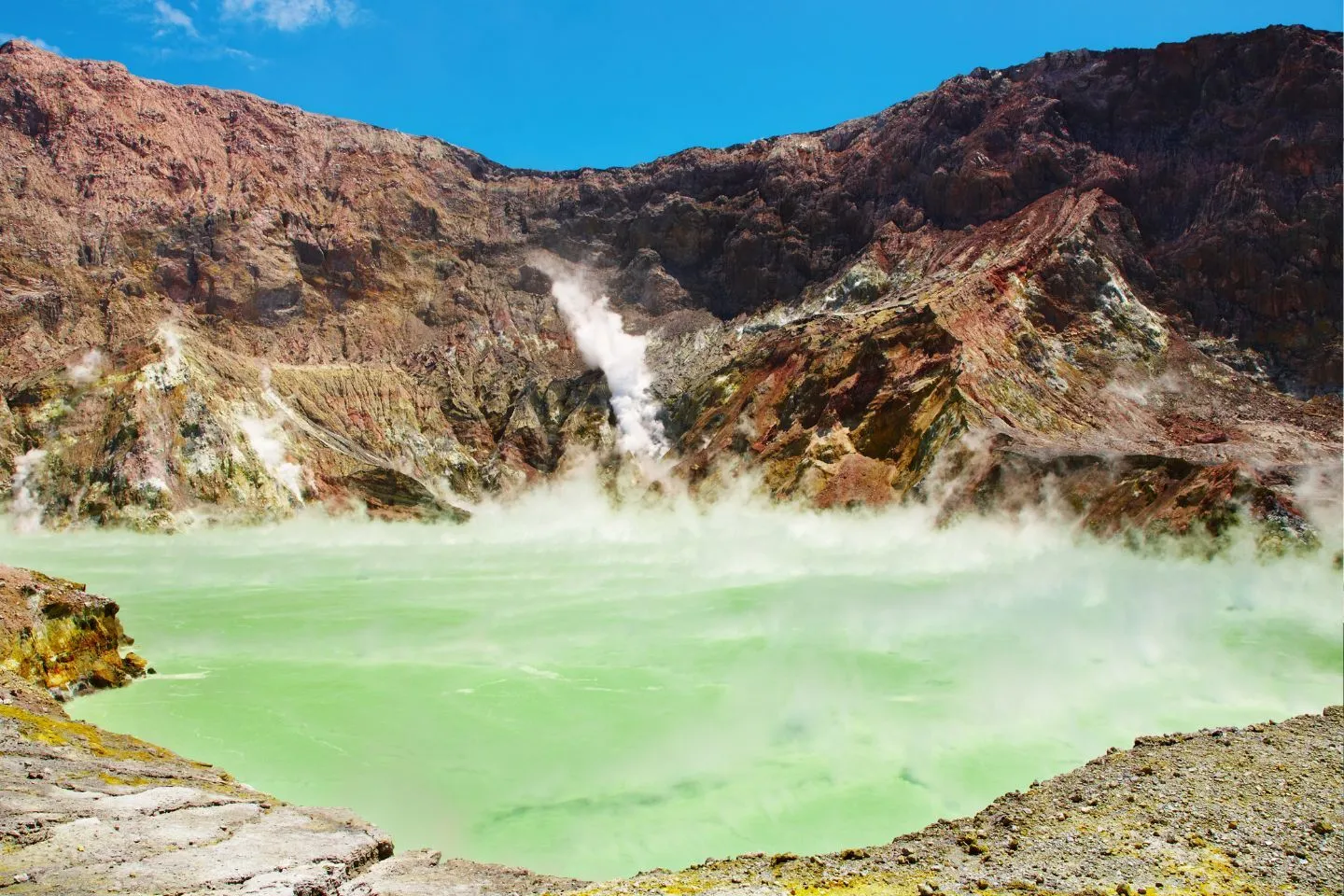Researchers have ventured more than a hundred meters underground to discover the world’s largest underground thermal lake. After various setbacks, they finally succeeded in proving their hypothesis.
Czech scientists made this extraordinary discovery in Albania. According to the Czech news portal “Seznam Zpravy,” the story began in 2021, when cave explorer Marek Audy suspected that there might be a cave with a rare thermal lake in the area around Vromoner in southern Albania.
Thermal lake reached, but initial measurements unsuccessful
In the summer of 2021, Audy and his wife ventured into the sulfur cave for the first time. “There were scorpions, spiders, heat, and a terrible smell. I wouldn’t say it was a romantic cave,” he said, describing his experience to “Seznam Zpravy.” The research group continued to investigate the area and, in 2022, discovered a conspicuous column of steam thanks to drone footage. However, they were initially unable to reach the lake on site. It was not until the fall of 2023 that they managed to descend into the depths – but the actual size of the lake remained hidden because the laser did not target the opposite shore accurately.
High-tech expedition with state-of-the-art equipment
Audy returned with his team in October last year. According to the science platform Neuron, the aim was to “confirm and accurately measure their earlier discovery of the world’s largest underground thermal lake.” Using state-of-the-art technology, a 3D lidar scanner, the researchers were finally able to take precise measurements. This laser technology is also used to measure houses, for example. The result: the underground thermal lake is 138.3 meters long, 42 meters wide, and contains an impressive 8,335 cubic meters of thermal water, as reported by Seznam Zpravy.
Surprises in the depths – new sea map reveals secret hills
But that’s not all: researchers at the Scripps Institution of Oceanography have made another spectacular discovery. Using new mapping data, they came across over 200,000 previously unknown hills in the deep sea. These findings could not only revolutionize our understanding of geology and ocean currents, but also make navigation safer for submarines.
Sources:
Seznam Zpravy, Neuron (Facebook), Scripps Institution of Oceanography















Recent Comments